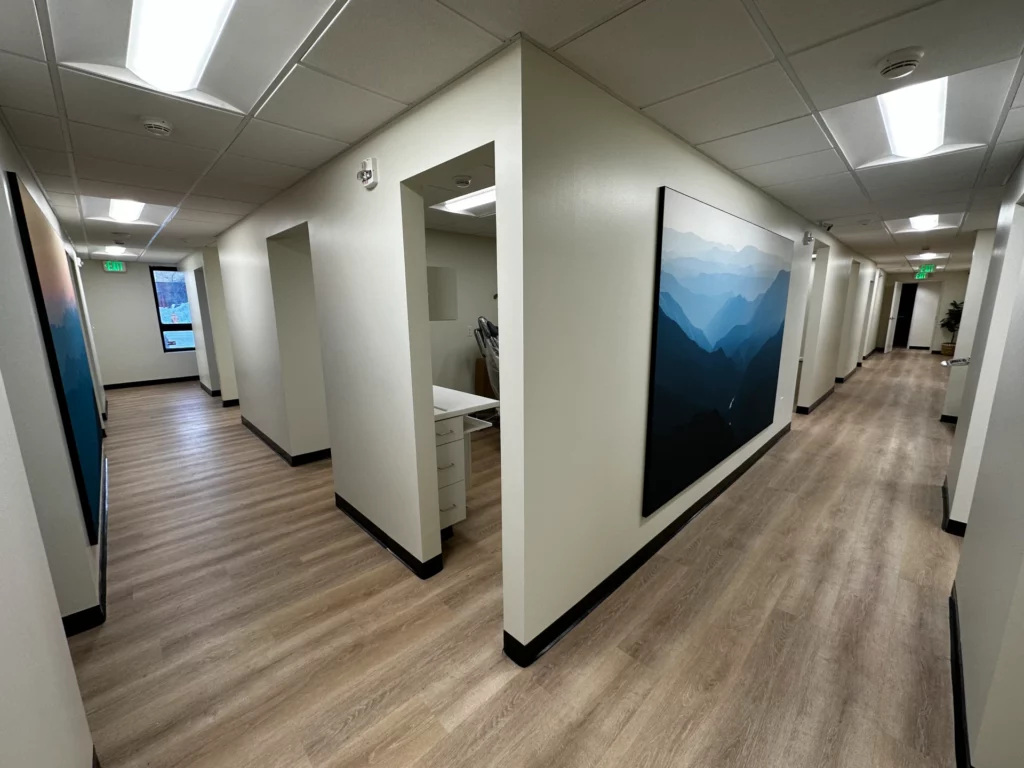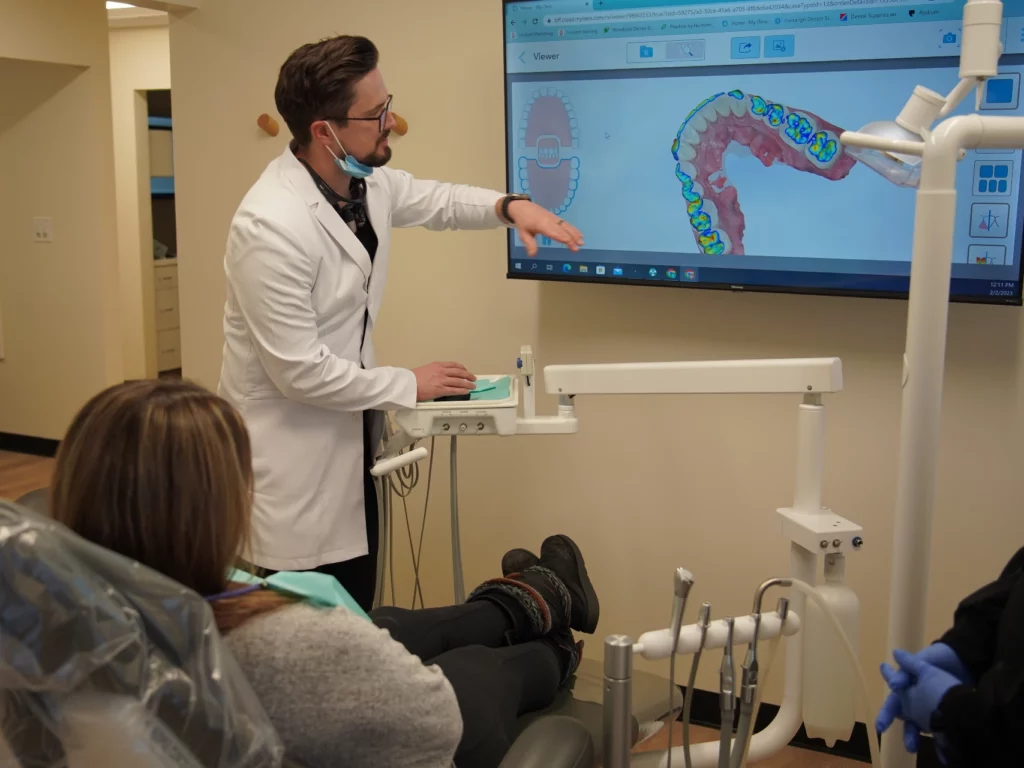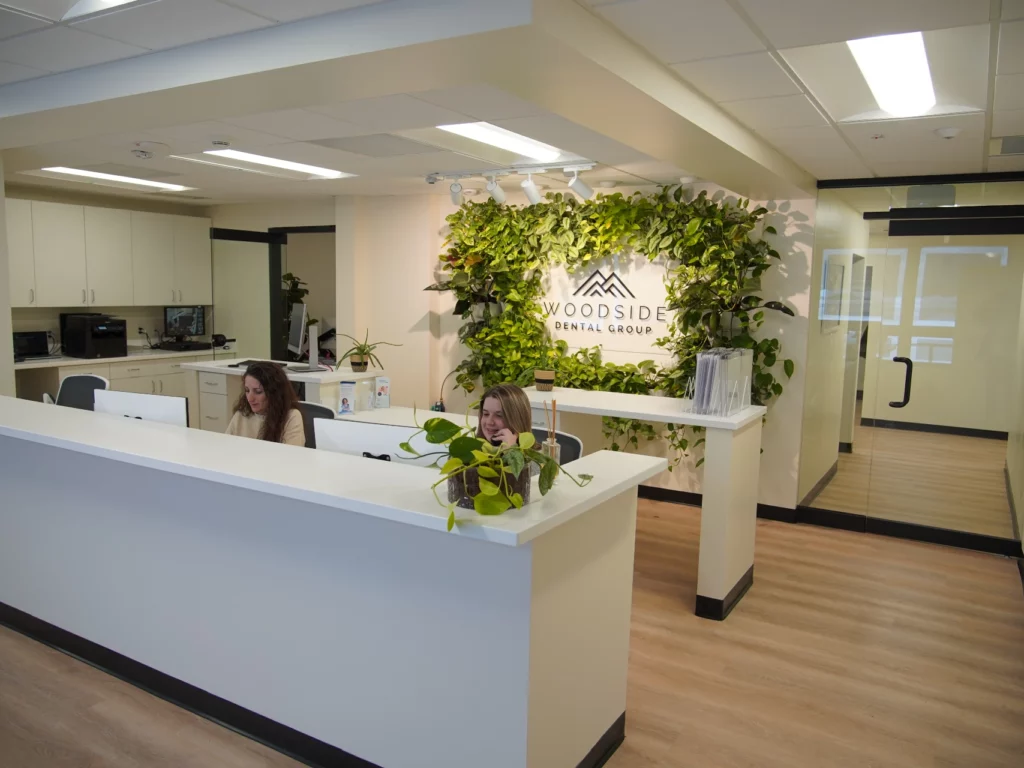Technology in the dental field is ever-changing and we pride ourselves on integrating state-of-the-art equipment into our practice. At Woodside Dental Group, we have invested in the latest technology to deliver a better denture product compared to the average practice. Additionally, we can treat patients with less pain and in fewer visits. This means we provide the best possible result with less time in the dental chair and a more comfortable experience from start to finish.
The use of intra-oral scanners in dentistry offers several benefits, including:
Overall, the use of intra-oral scanners can improve the efficiency, accuracy, and comfort of dental treatments while enhancing the patient experience and outcomes.
Using a facial scanner for denture fabrication offers several benefits. By capturing accurate digital images of a patient’s face, teeth, and gums, the scanner can assist in creating dentures that are comfortable, functional, and aesthetically pleasing.
Here are some of the specific benefits of using a facial scanner for denture fabrication:
Overall, using a facial scanner for denture fabrication can lead to more accurate, aesthetically pleasing, and functional dentures that are more comfortable for the patient. This technology can also help to reduce the amount of time required for denture fabrication.
The main differences between desktop digital scanners and intra-oral scanners are their size, design, and application. Desktop digital scanners are larger and typically used for larger restorative cases, while intra-oral scanners are smaller and used for smaller cases. The most common error in fabricating a denture that is supported by implants is capturing the EXACT position of the implant. Regardless of experience it is difficult for every clinician. Sometimes you have to remake it several times. That is why we invested in the FREEDOM UHD desktop scanner. This is the most accurate scanner on the market today.
When accuracy is the most crucial factor to get right, the FREEDOM UHD desktop scanner is the ONLY option to use when taking precision records for the final restoration. At our office we do everything we can to eliminate human error so that our patients can get the best, most accurate product that fits right the first time.
CBCT stands for Cone Beam Computed Tomography, which is a special type of x-ray machine that dentists use to see a 3D image of your mouth and teeth. This machine helps dentists to plan the placement of dental implants, which are artificial teeth that are placed in your mouth to replace missing or damaged teeth.
When a dentist plans to place a dental implant, they need to make sure that it will fit properly in your mouth and be positioned correctly. This is where the CBCT image is important because it allows the dentist to see a detailed picture of your mouth, including the bone, nerves, and other structures. By using this image, the dentist can plan the exact location and size of the implant and ensure that it will fit properly and be safe for you.
So, in short, the CBCT image is important for dental implant planning because it allows the dentist to see a detailed 3D image of your mouth and teeth, which helps them to plan the placement of the implant and ensure that it will fit properly and be safe for you.
By far the biggest advancement in dentistry is the development of 3D printers. Recently the FDA has approved resins that approved for final restorations, dentures, and other dental products. Specifically the Desktop Health Einstein 3D printer has been the leader in the new technology. Firstly, it provides exceptional accuracy and precision in the creation of dental prostheses, including crowns, bridges, and dentures.
With its advanced technology, this printer produces high-quality 3D models that allow for a more efficient and streamlined workflow, reducing the time required for traditional manufacturing methods. This not only saves valuable time but also allows for a more cost-effective process that ultimately benefits the patient.
The Einstein 3D printer also enables us to create custom-made prostheses tailored to the specific needs of individual patients. This is particularly important for patients who require complex or challenging dental restorations that cannot be achieved through traditional methods in less than 24 hours post surgery.
Furthermore, the printer’s ability to print in biocompatible materials such as ceramics, resins, and metals, ensures that the final products are safe and reliable, with minimal risk of adverse reactions or complications.
Overall, the Desktop Health Einstein 3D printer provides our office with cutting-edge technology that enhances patient care and satisfaction, increases efficiency and accuracy, and ultimately improves the quality of dental prostheses.
Our patients are our biggest fans. Here are a few highlights from our public reviews.
Monday
8:00AM – 4:00PM
Tuesday
8:00AM – 4:00PM
Wednesday
8:00AM – 4:00PM
Thursday
8:00AM – 4:00PM
Friday
8:00AM – 2:00PM
Saturday
CLOSED
Sunday
CLOSED
We are happy to answer your questions. Please fill out our contact form and we will get back to you shortly!


